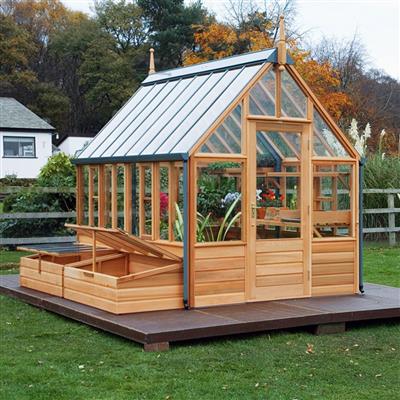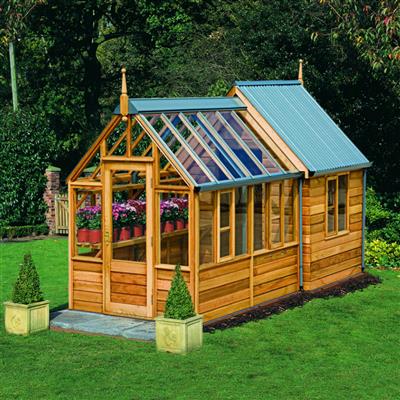
Greenhouses in Australia play an increasingly important role in modern horticulture, food security, and sustainable agriculture. With a continent defined by climatic extremes—from the hot, arid regions of Western Australia and the Northern Territory to the cool temperate climates of Tasmania and Victoria—greenhouses provide controlled environments that support consistent and high-quality crop production. As Australia faces challenges such as drought, soil degradation, rising temperatures, and unpredictable weather events, greenhouse technology has become a critical solution for both commercial growers and hobby gardeners.
Australia’s climate is one of the most variable in the world. Many regions experience prolonged heat waves, intense sunlight, water scarcity, and seasonal frosts. These conditions pose limitations for open-field agriculture, making crop reliability a challenge. Greenhouses provide a controlled environment that counters these limitations by regulating temperature, humidity, and soil conditions. They allow farmers and gardeners to grow crops year-round, protect produce from extreme heat, frost, hail, wind, and pests, and maintain optimal growing conditions regardless of external weather fluctuations. For a nation with large semi-arid and desert zones, greenhouse systems contribute significantly to maximizing productive land and maintaining crop yields.

Australia utilizes a range of greenhouse styles suited to different climates and production goals. Polycarbonate panel houses are popular in cooler regions because they provide strong insulation and UV protection. Glass greenhouses, though more expensive, offer clarity and longevity and are commonly used in commercial operations. Polytunnels and hoop houses are widespread in rural areas and market gardens due to their affordability and adaptability. Shade-house and greenhouse hybrid systems are particularly effective in northern and central Australia, where intense heat and strong sunlight require both shade management and ventilation. Many growers also employ hydroponic and aquaponic greenhouse systems to maximize water efficiency and increase productivity per square metre—an approach increasingly relevant in drought-prone areas.
Technological Advancements and Smart Growing Systems
Advancements in technology have significantly transformed the Australian greenhouse industry. Automation systems now regulate temperature, humidity, CO₂ levels, and irrigation schedules, creating precision-controlled growing environments. Smart vent systems, misting units, thermal screens, and solar-powered climate control technologies enhance efficiency and reduce energy usage. The adoption of hydroponics, vertical farming structures, and LED grow-light systems has expanded greenhouse production capacity while minimizing resource consumption. These innovations support the cultivation of high-value crops such as tomatoes, cucumbers, lettuce, berries, herbs, and specialty greens for both domestic markets and export.
Greenhouses contribute significantly to Australia’s agricultural economy. The protected-cropping industry, valued Greenhouses Kits in the billions, supplies supermarkets, restaurants, and export markets with premium produce. Greenhouse farming enables consistent production cycles, reducing reliance on imports and improving national food security. Additionally, greenhouse operations support rural employment, agriculture technology development, and regional economic growth. On a residential scale, home greenhouses empower households to grow vegetables, herbs, and ornamental Buy Greenhouses plants year-round, promoting self-sufficiency and reducing reliance on commercial supply chains.
Sustainability is a core benefit of greenhouse agriculture in Australia. Efficient irrigation systems reduce water consumption Buy Greenhouses compared to traditional farming, and rainwater harvesting systems are commonly integrated into greenhouse setups. The ability to recycle nutrient-rich water in hydroponic systems further minimizes waste. Greenhouses also reduce pesticide usage by providing physical barriers against pests and diseases, supporting a shift toward clean, chemical-free food production. As the nation prioritizes climate resilience and sustainable land use, greenhouse farming aligns closely with environmental conservation goals.
Despite their benefits, greenhouse operations in Australia face challenges including high initial installation costs, energy requirements for temperature control, and the need for specialized knowledge in hydroponic and climate-controlled systems. Regional regulations and supply chain costs can also impact scalability for small producers. However, ongoing innovation, increased availability of affordable greenhouse kits, renewable-energy integration, and government support for sustainable agriculture signal a strong future for the sector. With growing demand for local, fresh produce and the rising popularity of home gardening, greenhouses are poised to become even more prominent across the Australian landscape.

Greenhouses in Australia represent a powerful tool for overcoming climate limitations, improving food security, and advancing sustainable agriculture. From backyard gardeners to commercial horticulture operations, protected cropping systems are reshaping how Australians grow and consume fresh produce. By leveraging technology and adapting greenhouse designs to Greenhouses Kits local climates, Australia continues to build a resilient, resource-efficient agricultural future. As environmental challenges intensify, the importance of greenhouse cultivation will only continue to grow, making it an essential pillar of the country’s agricultural and horticultural landscape.